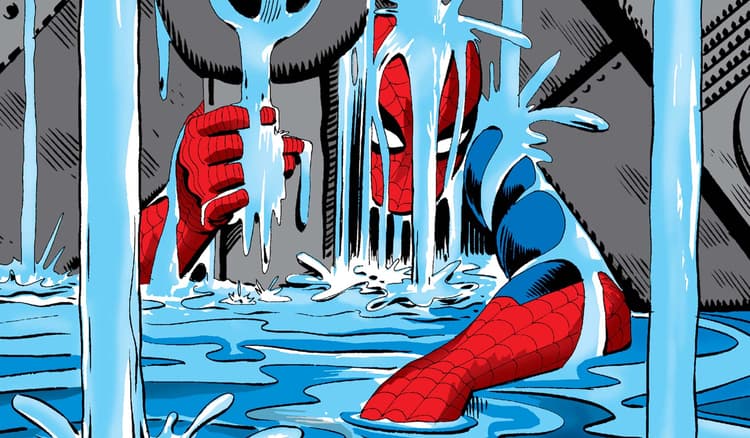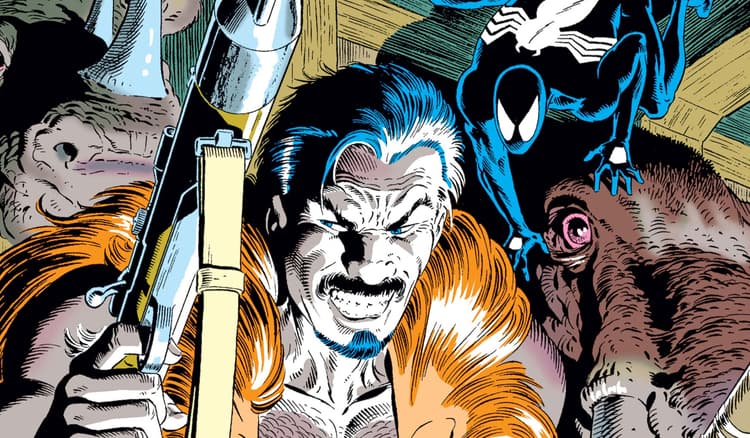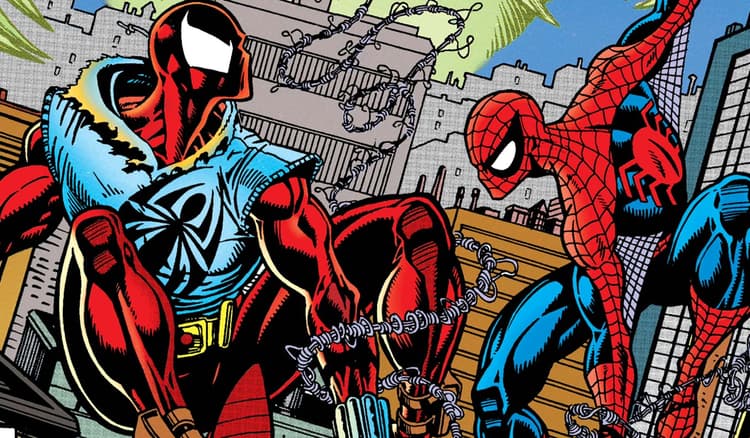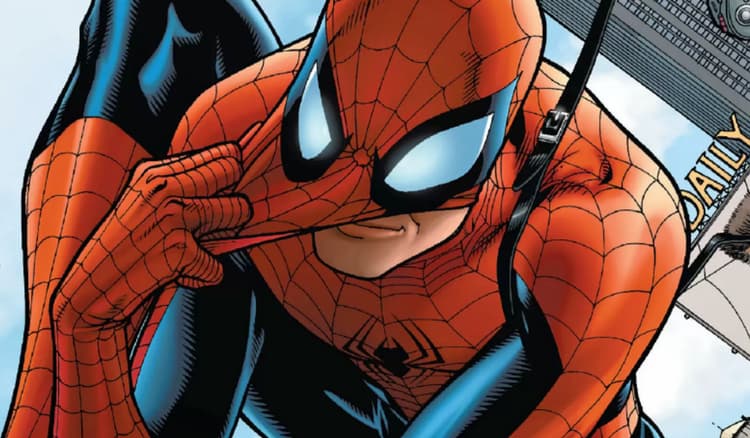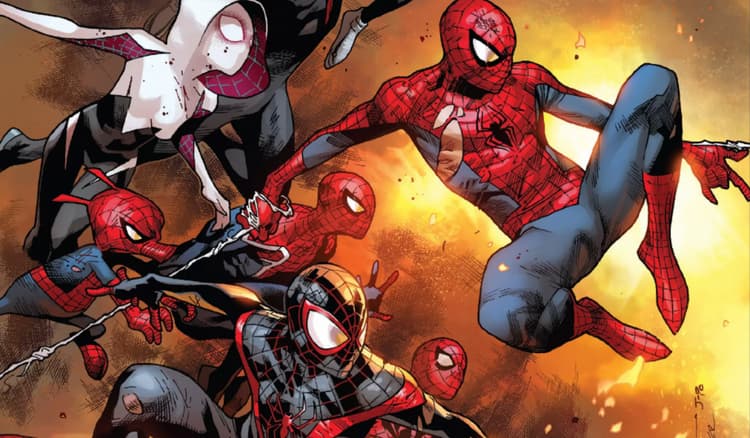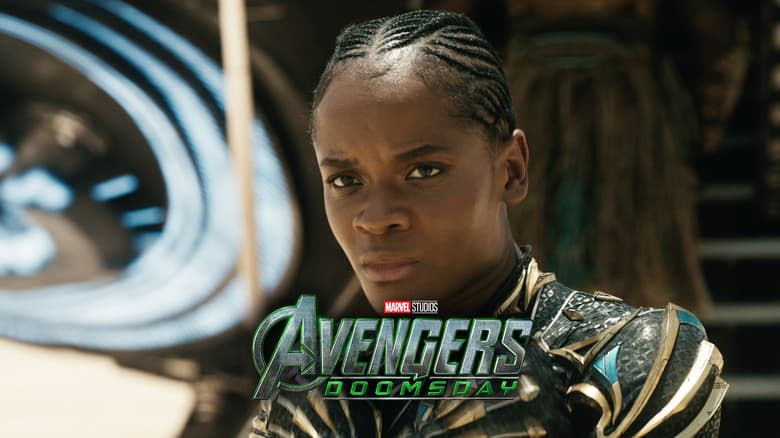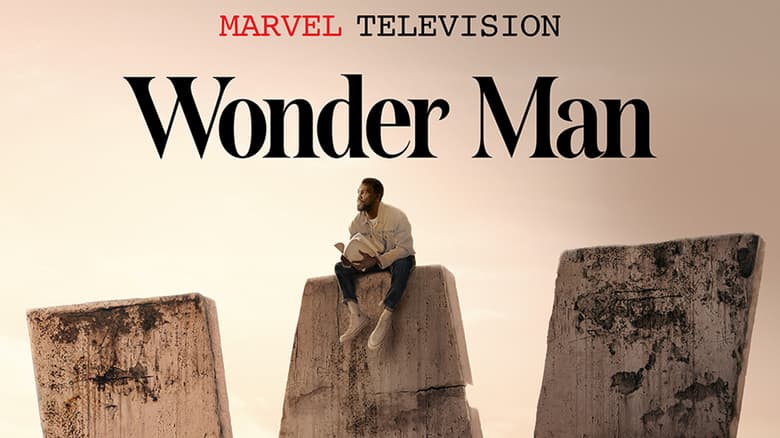The Most Impactful Spider-Man Stories of Each Decade
Check out the most formative, memorable stories from each decade of Spider-Man's 60-year history at Marvel.
Over the past 60 years, Spider-Man has had more than a lifetime’s worth of adventures. From his early teenage exploits to the cosmic heights of SECRET WARS (1984) and SPIDER-VERSE (2014), Peter Parker has faced spectacular challenges and fought countless battles as Marvel’s premier Web-Slinger. With his Spider-powers, incorruptible morality, super-smarts, and stinging sense of humor, the Wall-Crawler has cemented himself as one of pop culture’s most enduring icons.
To celebrate Spider-Man’s diamond anniversary, let’s take a look back at some of the Web-Slinger’s most memorable, important, and impactful adventures from each decade of his wall-crawling history.
1960s: If This Be My Destiny
Even decades after their debut, Stan Lee and Steve Ditko’s early Spider-Man stories still stand as some of the Web-Slinger’s most essential adventures. In THE AMAZING SPIDER-MAN (1963) #31-33, Spidey’s creators gave Peter Parker one of his most iconic triumphs. Soon after Peter Parker started college and met Harry Osborn and Gwen Stacy for the first time, Aunt May fell ill due to a radioactive blood transfusion. Meanwhile, Doctor Octopus – who was operating as the Master Planner – stole some ISO-36, a rare serum that could save May’s life. After tracking down Doc Ock, Spider-Man was pinned down under several tons of steel machinery in a flooding room. However, his relentless determination to save May gave him the strength to free himself in time to save the day in a riveting sequence from THE AMAZING SPIDER-MAN (1963) #33.
With Peter finding the motivation deep within himself to overcome impossible odds, this heavy-lifting sequence and the story that precedes it perfectly capture the essence of Spider-Man. At the peak of their powers, Ditko and Lee masterfully built up tension and suspense through the early parts of this story. At its climax, Ditko’s tight panels and Lee’s dramatic narration and dialogue give way to the dynamic, iconic image of Spider-Man jubilantly freeing himself. Even today, this stands as one of Spider-Man’s most hard-fought victories and as a character-defining moment that’s echoed throughout the decades.
1970s: The Night Gwen Stacy Died
One day in 1973, Peter Parker got a cold, an inconvenience that gave way to horrific tragedy in THE AMAZING SPIDER-MAN (1963) #121-122. By the end of those classic issues by Gerry Conway, Gil Kane, John Romita, and Tony Mortellaro, both Spider-Man’s girlfriend Gwen Stacy and nemesis, Norman Osborn’s Green Goblin, were dead. Before that fateful tale, Osborn had learned Spider-Man’s secret identity but forgot it in a bout of amnesia. Once those memories returned, Norman donned his Green Goblin costume and kidnapped Gwen. After a fierce battle with Osborn atop the George Washington Bridge, Spider-Man was too late to save Gwen from falling to her death, with his mistimed web-line seemingly snapping her neck mid-fall. After mourning his late love, an enraged Spider-Man tracked Osborn down and mercilessly beat him. Spider-Man came to his senses, but the Green Goblin accidentally impaled himself on his Goblin Glider and died in front of a stunned Spider-Man.
As with Uncle Ben, Gwen Stacy’s death is one of Spider-Man’s most profound failures. When these comics were published, the unexpected killing of a significant supporting character like Gwen was unthinkable, and this shocking tale still resonates today. Despite Osborn’s demise, Gwen’s death cemented the Green Goblin as Spider-Man’s eternal arch-nemesis. While the high-flying adventures of Earth-65’s Ghost-Spider keep Gwen’s spirit alive today, her lasting death cast a lingering shadow over almost all of Spider-Man’s subsequent adventures.
1980s: Kraven’s Last Hunt
During the original SECRET WARS (1984), Spider-Man began wearing a black costume that was later revealed to be an alien symbiote, which eventually became known as Venom. In 1987’s “Kraven’s Last Hunt,” one of Spider-Man’s classic foes donned a cloth version of the Web-Slinger’s black suit in a grim tale of obsession and psychological torment. Starting in WEB OF SPIDER-MAN (1985) #31 by J.M. DeMatteis, Mike Zeck, and Bob McLeod, this six-part epic saw Kraven the Hunter avenge his past defeats with a blistering assault against Spider-Man that included shooting him, burying him alive, assuming his identity, and hunting down the cannibalistic Vermin. After two weeks underground, Peter Parker fought his way out of his own grave and confronted Kraven, who ultimately took his own life.
Throughout the 1980s, comics like Frank Miller and David Mazzucchelli’s DAREDEVIL (1964) classic “Born Again” used Super Hero comics to embrace darker, more mature themes. “Kraven’s Last Hunt” proved Spider-Man could fit right in with that more serious style of storytelling, spinning an eerie and hallucinogenic tale that included some of the most dynamic moments in the Wall-Crawler’s history. While Kraven the Hunter has menaced Spider-Man since the 1960s, “Kraven’s Last Hunt” certified him as one of the most serious threats in the Web-Slinger’s rogues’ gallery and set the stage for his later reappearances to be events in their own right.
1990s: The Clone Saga
In THE AMAZING SPIDER-MAN (1963) #149, a mad scientist called the Jackal created a clone of Peter Parker who seemingly died after his first encounter with Spider-Man. That innocuous tale became the basis of “The Clone Saga,” a sprawling saga that engulfed Spider-Man’s world from mid-1994 to the end of 1996. When an ailing Aunt May was in the hospital, Peter’s clone returned, revealing himself as Ben Reilly in WEB OF SPIDER-MAN (1985) #117 by Terry Kavanagh, Steven Butler, and Randy Emberlin. As Ben started operating as the heroic Scarlet Spider, Peter began wondering if he was actually the clone while the Jackal and Kaine, a homicidal Parker clone, rampaged. Peter even briefly retired and passed his alter ego down to Ben, who masqueraded as Spider-Man for several months. Ultimately, Ben’s status as a clone was confirmed, Peter became Spider-Man again, and the whole ordeal was revealed to be a complicated scheme by a resurrected Norman Osborn.
Although “The Clone Saga” may be best known for its considerable length and complex plot, this story saw Peter Parker confront – and overcome – his greatest doubts as he faced several milestones of adulthood. While it ultimately reaffirmed Peter’s identity, “The Clone Saga” was the first major exploration of the idea that someone other than Peter could wear Spider-Man’s mask, which has only grown more relevant in recent years. Under a legion of creators who worked on this story and its follow-ups, Ben Reilly and even a redemptive Kaine grew into fan-favorite Web-Slingers.
2000s: Brand New Day
In the 2000s, Spider-Man discovered his supernatural connection to the Web of Life, joined the Avengers full-time, publicly revealed his secret identity during CIVIL WAR (2006), and even sacrificed his marriage to save Aunt May. But starting with THE AMAZING SPIDER-MAN (1999) #546 by Dan Slott, Steve McNiven, and Dexter Vines, Peter Parker moved beyond all of that as he stepped into “Brand New Day.” This story channeled the spirit of Spider-Man’s classic adventures with a struggling, single Peter trying to juggle his personal life with his web-slinging responsibilities. While “Brand New Day” explored the return of a long-absent Harry Osborn, it primarily emphasized new characters like the crime boss Mr. Negative, forensic scientist Carlie Cooper, the Goblin-esque villain Menace, and the mysterious new hero Jackpot.
Thanks to ULTIMATE SPIDER-MAN (2000) and other media, Peter Parker was redefined as a young character in the 2000s. “Brand New Day” reinvigorated the original Peter Parker, giving him an accessible, forward-looking status quo and youthful energy that matched his newer counterparts. With a rotating roster of writers and artists, the original “Brand New Day” storyline and the era it kicked off helped THE AMAZING SPIDER-MAN (1999) flourish for years with a mix of new characters, familiar friends and foes, and compelling mysteries that reasserted it as the center of the Web-Slinger’s world.
2010s: Spider-Verse
While Peter Parker will always be the original Spider-Man, he’s hardly the only Spider-Hero in the Multiverse. In 2014 and 2015, SPIDER-VERSE brought together almost every Spider-Hero variant for a massive Multiversal event. After the EDGE OF SPIDER-VERSE (2014) prelude, Peter Parker teamed up with his Multiversal counterparts in THE AMAZING SPIDER-MAN (2014) #9 by Dan Slott and Olivier Coipel. While Morlun and the supernatural Inheritors killed and consumed several of the Multiverse’s Spider-Heroes, Peter Parker ultimately rallied the Web Warriors to save the day.
In a decade that saw Doctor Octopus become the Superior Spider-Man and Miles Morales and Ghost-Spider emerge as the heroes of their respective worlds, SPIDER-VERSE and its sequels underscored the idea that truly anyone could be a Spider-Hero. Throughout the rest of the 2010s and into the 2020s, this idea grew into a central feature of Spider-Man’s adventures across comics, television, and film. Where Peter Parker traditionally considered himself as a loner, SPIDER-VERSE explored the wide web of amazing heroes that his spectacular example directly or indirectly inspired across the Multiverse. Along with its follow-ups, this story helped pave the way for a new generation of Spider-Heroes like Silk and Miles to take their place as new fixtures in the Marvel Universe, while reaffirming the importance of Peter as the Spider-Man at the center of the Multiverse’s tangled web.
Marvel is celebrating Spider-Man's 60th anniversary all month long! Stay tuned for more Spider-fun right here on Marvel.com.
You can grab these comics and more digitally or at your favorite local comic book shop. Be sure to ask your local shop about their current business policies to observe social distancing or other services they may offer, including holding or creating pull lists, curbside pick-ups, special deliveries, and other options to accommodate. Find and support your local comic book shop at ComicShopLocator.com or by visiting Marvel.com/LoveComicShops.
For digital comics, all purchases in the Marvel Comics app can be read on iPhone®, iPad® and select Android™ devices! Our smart-paneling feature provides an intuitive reader experience, ideal for all types of mobile device and tablet users! Download the app on iOS and Android now!
The Daily Bugle
Can’t-miss news and updates from across the Marvel Universe!
